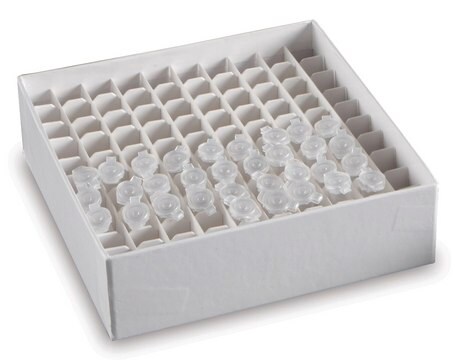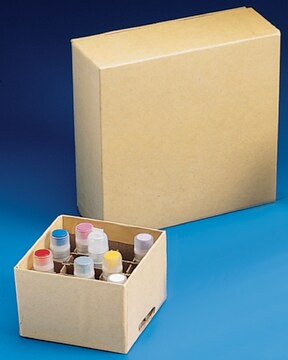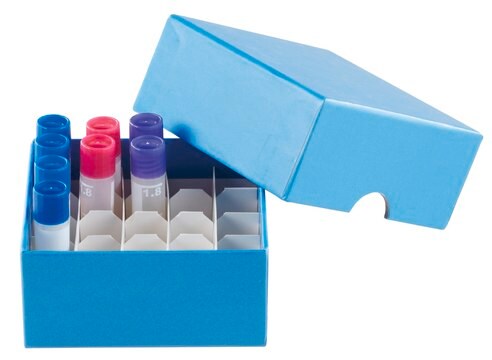MABS1284
Anti-Apolipoprotein(a) Antibody, clone LPA4
clone LPA4, from mouse
Sinónimos:
Apolipoprotein(a), Apo(a), Lp(a)
About This Item
Productos recomendados
origen biológico
mouse
forma del anticuerpo
purified immunoglobulin
tipo de anticuerpo
primary antibodies
clon
LPA4, monoclonal
reactividad de especies
human, primate
técnicas
ELISA: suitable
immunohistochemistry: suitable (paraffin)
immunoprecipitation (IP): suitable
western blot: suitable
isotipo
IgG1κ
Nº de acceso UniProt
Condiciones de envío
ambient
modificación del objetivo postraduccional
unmodified
Información sobre el gen
human ... APOA1(335)
Descripción general
Especificidad
Inmunógeno
Aplicación
Immunohistochemistry Analysis: A 1:25 dilution from a representative lot (pre-conjugated with biotin) detected Apo(a) in paraffin-embedded human carotid artery tissue sections (Courtesy of Dr. Sotirios Tsimikas, M.D., University of California at San Diego, USA).
ELISA Analysis: A representative lot was employed as either the capture or detection antibody for the detection of Lp(a) levels in human, chimpanzee, bonobo, gorilla, baboon, and cynomolgus monkey plasma samples, as well as the interaction of OxPL and ApoB with various human Apo(a) transgenes in Tg mice blood samples and purified recombinant human Apo(a) constructs (Leibundgut, G., et al. (2013). J. Lipid Res. 54(10):2815-2830).
ELISA Analysis: A representative lot was employed either as the capture antibody for the detection of Apo(a) and Apo(a)-associated OxPL or as the detection antibody (biotinylated) for the detection of Lp(a) (ApoB-linked Apo(a)) captured by an ApoB antibody in a atherosclerosis study involving uremic mice that express human Apo(a) and ApoB transgene (Pedersen, T.X., et al. (2010). J. Lipid Res. 51(10):2967-2975).
Immunoprecipitation Analysis: A representative lot immunodepleted Apo(a) and associated OxLDL-E06 from patients plasma samples collected immediately before or 6 hrs after percutaneous coronary intervention (PCI), while only ~50% of OxLDL-E06 was found associated and co-precipitated with Apo(a) in the immediate post-PCI time point (Tsimikas, S., et al. (2004). Circulation. 109(25):3164-3170).
Western Blotting Analysis: A representative lot detected recombinant human wild-type Apo(a) and a 8K-IV lysine-binding defective (LBS-deficient) Apo(a) mutant expressed in and purified from transfected HEK293 cells (Leibundgut, G., et al. (2013). J. Lipid Res. 54(10):2815-2830).
Signaling
Calidad
Isotyping Analysis: The identity of this monoclonal antibody is confirmed by isotyping test to be mouse IgG1 .
Descripción de destino
Forma física
Almacenamiento y estabilidad
Otras notas
Cláusula de descargo de responsabilidad
¿No encuentra el producto adecuado?
Pruebe nuestro Herramienta de selección de productos.
Código de clase de almacenamiento
12 - Non Combustible Liquids
Clase de riesgo para el agua (WGK)
WGK 1
Punto de inflamabilidad (°F)
Not applicable
Punto de inflamabilidad (°C)
Not applicable
Certificados de análisis (COA)
Busque Certificados de análisis (COA) introduciendo el número de lote del producto. Los números de lote se encuentran en la etiqueta del producto después de las palabras «Lot» o «Batch»
¿Ya tiene este producto?
Encuentre la documentación para los productos que ha comprado recientemente en la Biblioteca de documentos.
Nuestro equipo de científicos tiene experiencia en todas las áreas de investigación: Ciencias de la vida, Ciencia de los materiales, Síntesis química, Cromatografía, Analítica y muchas otras.
Póngase en contacto con el Servicio técnico







